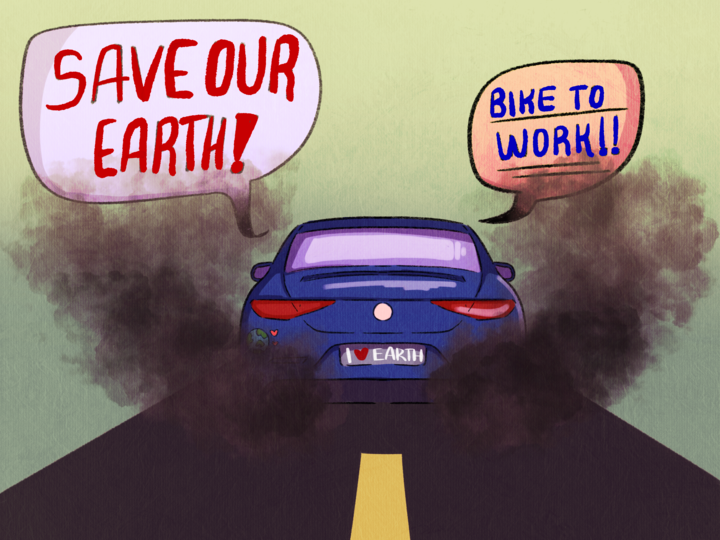You might have heard tales of them told by grizzled seniors, lurking in the darkest recesses of a party. You might have seen evidence of them on the scorched skin of campus adventurers and explorers. It’s possible you’ve seen the cryptic symbols on the ground, hinting at their very existence.
Whatever the clues, some part of you is partially aware of them and I’m here to tell you that yes, Virginia … there are tunnels at the UA.
Far too many students are ignorant of their existence, unaware that they tread over a massive labyrinth of subterranean tunnels every single time they go to class. The clues are blatant enough: those “”cryptic symbols”” are hardly that; they are actually the words “”UA TUNNELS”” sprawled over almost every section of campus. Look down every once in a while and you’ll see what I mean. Even then, how can one accurately assemble a mental image from such a rudimentary description? Short of exploring for oneself (do it!) you can, with the help of a well-informed and devilishly handsome opinions writer.
And so now, let us cast off the secrets and obscurity of this shadowy campus legend and take you down into the very real, very useful and very off-limits campus tunnels.
First, like any good exposé, a little history and facts to make you consider abandoning this article and read the comics page instead. For your benefit and for mine, they will be presented in “”Q and A”” form. Because I am not a slave to format.
Q. What are the tunnels?
A. The tunnels connect nearly every building on campus to one another. They are used to transport many crucial elements, such as water, electricity and steam.
Q. How long have they been there?
A. Since they’ve been needed — as soon as there was a requirement for a system to transport utilities from one building to the next. The earliest tunnels were constructed in the 1920s.
Q. Is this the only school that has them?
A. Not even close. Almost every school in the world has such tunnels. Since universities exist as self-sufficient “”mini-cities,”” they also carry with them these self-serving underground infrastructures. The UA’s tunnels are actually more obscure than most; student bodies are often extremely well aware of them in colder environments. The tunnels are a great alternative to trudging to class in cold weather.
And there you have it! Informative. Now on to the good stuff. When you imagine the tunnels in your mind, you probably conjure some image of a dark, dank and slimy passageway. Water drips from leaks in the ceiling and rats scurry away from any movement; basically, the epitome of any sewer escape in movies. Those were my initial impressions, until a “”friend”” of mine was able to finally enter the tunnels for himself. Or, uh, herself. Doesn’t have to be a he.
Anyway, the tunnels are not cold, damp tombs of steam and water, but instead the exact opposite. Sand lines the bottom of these paths, most of which are just barely wide enough for a grown man to pass through. They are dark, but only before you flip a glowing switch and send hundreds of light bulbs sparking to life, promenading one by one down the tunnel like the entrance to a James Bond villain’s cave hideout. And the biggest misconception of all (their inherent coldness), is quickly and sweat-ily disproved by the blasts of dry heat that consume you once you are inside. That’s hot water and steam in those pipes, and you can feel it instantly (or so I’ve heard). There are signs that tell you where you are, and it’s hard to beat the intense thrill of knowing that you are under Old Main, or taking a left toward the basement of Coconino Residence Hall.
Now an article is worth 700 words (length requirement), but a visceral experience is worth a billion, and to truly take in the hot, dusty wonder of the tunnels, you’d have to explore for yourself. I, of course, could never condone such brazen behavior, but I should point out that those staircases by Park Avenue don’t lead to hell or China.
Even if you don’t have the pleasure of trudging through red-hot pipe infested, claustrophobic sand tunnels, you are still now a more educated person. You are acutely aware that there is a maze of exciting, off-limits tunnels below your very feet, and dropping that fact in conversation at a party could quite possibly make you a “”cool”” kid. I will even give you license to use the descriptions in this article to make a convincing argument that you were down there, and you can pretend that your Ramen Noodle burn came from a pipe somewhere below the Henry Koffler building. This is the kind of stuff you can’t learn in a classroom — now go apply your knowledge in the world.
— Johnny McKay is a media arts senior. He can be reached at letters@wildcat.arizona.edu.








